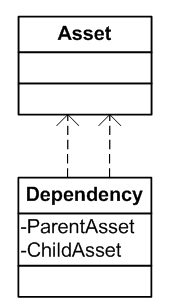One of my customers is trying to create an interactive "matrix" of interdependencies for the various applications used in their company (it's a travel&leisure company with around 2500 employees).
The idea (still at the prototype stage) is to create a sort of Map, based on Visio or similar tool, which traces the communication and interdependencies between all the IT assets in the company, so that when someone asks for a change they can get an overview of the impacts.
This was mentioned in a casual setting and it will not be my responsability to directly work on this, but I did contribute the little I know already in terms of vaguely related methodologies (Zachman Framework).
I'd like to hear from the people in here if they know of methodologies, or tools, that may help this kind of effort, and if they have any specific experience to contribute. I'll digest the answers and send the result back to my customer, hoping this may be of some help with their task (which I consider a bit visionary and prone to all the pitfalls of any documentation project, but still well worth pursuing).
N.B.: The question is not "I have all this data I collected about the IT assets and I am unable to afford Visio or Google for Graphviz or convert it to a MindMapping tool or create a custom navigator using Jgraph etc.etc.". The problem is "how do I collect the relevant/useful information, and how should I organize these, considering I may have to update the data regularly, due to interface, version, and package changes?"
This is not much of a Visualization problem, or not yet. We have to get to a good start with data collection and organization first. If you want to suggest a tool, it must also include the data collection and management part (e.g.: Rational System Architect). But in that case, please suggest it if you have some actual experience, or if you are pretty sure it's quite niche and not very well know (I can Google, thank you). If you want to suggest some books/methodologies this is helpful too (I know only of the Zachman Framework, and not sure it's really a good fit).
"Just create an Excel file" or "You could use SmartDraw, man!!!" don't help much, I am afraid.
Found Iteraplan which looks a very good fit!
